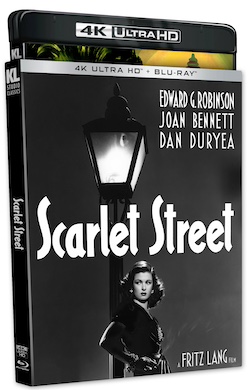
* * *
The Austrian director Fritz Lang (1890-1976) is renowned for many things, primary among them the pioneering science fiction film “Metropolis” (1927) and the equally pioneering pre-noir film “M” (1931). Close to a century later, both films hold up as exemplars of cinematic art and its capacity to elaborate upon apprehensions as yet unimagined and desires most of us are incapable of imagining.
If you haven’t revisited Maria, the indelible maschinenmensch played by Brigitte Helm, or Peter Lorre’s star-making performance as the loathsome Hans Beckert, be advised: they’ve lost none of their cogency.
Sometimes, Lang’s films could be too cogent. Upon its release, “The Testament of Dr. Mabuse” (1933) was banned by the Reich Ministry of Public Enlightenment and Propaganda. The reason? Its chief propagandist, Joseph Goebbels, didn’t think a picture that imagined how an “extremely dedicated group of people are perfectly capable of overthrowing any state with violence” was fit for public consumption.
All the same, Goebbels called Lang into his office and attempted to draft the director into making “the Nazi film.” The offer was made upon the recommendation of the fuhrer. Breaking into a sweat, Lang started considering his options. After making a pit stop in France, he settled in America, becoming a citizen in 1939. Lang would go on to direct some 22 films in his adopted homeland.
He made “Scarlet Street” (1945), a restored version of which Kino Lorber will release this week on Blu-Ray, on the heels of “The Woman in the Window” (1944), all the while retaining its key players. Those with a nose for noir have long placed the two films toward the top of the canon. At the time of its release, though, “Scarlet Street” was less than favorably considered. The authorities at Atlanta, Milwaukee, and, yes, New York State banned Lang’s film for fear that “it would tend to corrupt morals or incite to crime.” You know who else didn’t like the movie? Its star: Edward G. Robinson.

* * *
The 1940s would seem the high point of Robinson’s career. Forget the two Lang films: Robinson was also seen in “Dr. Ehrlich’s Magic Bullet” (1940), “Double Indemnity” (1943), “The Stranger” (1946), “Key Largo” (1948), and “House of Strangers” (1949). His segment of “Tales of Manhattan” (1942), an all-star portmanteau film, was among the most affecting. But, no, Robinson considered third billing in “Double Indemnity” a slight on his life’s work and the films done for Lang nugatory.
All of which puts one in mind of the old adage: “Trust the art, not the artist.” If Robinson was faking his way through “The Woman in the Window” and “Scarlet Street,” it’s not anywhere to be seen on the screen. Both performances are riveting and, in some ways, better than the films deserve.
The actor was well into his 50s when he went to work for Lang, and each of the pictures is predicated on the regrets that can come with middle age. It’s impossible to miss the sardonic strain that powers the performances. Robinson plainly brought his own encroaching mortality to these roles.
In “Scarlet Street,” he plays Christopher Cross, a cashier and Sunday-painter whose marriage of convenience has left him emasculated — in several scenes, Robinson dons the most ridiculous of kitchen aprons. Upon leaving a dinner held in honor of his 25 years of service, Cross sees a woman being battered by a man. He runs toward the couple, waylays the man with his umbrella and ends up walking the woman home. Kitty March (Joan Bennett) is young, beautiful, and has attitude to spare. Cross is smitten; Kitty is amused.
She’s also easily manipulated by her boyfriend and abuser, Johnny Prince (Dan Duryea), who sees the old man as an easy mark. Johnny doesn’t think twice about employing Kitty’s feminine charms to woo Cross, whom they both mistake for a wealthy man. Cross holds up his end of this illusion by embezzling money from his job to support Kitty in a lifestyle to which she’d like to become accustomed. Bennett is fabulous as the avaricious and, at surprising moments, slovenly femme fatale.
“Scarlet Street” is a notably imperfect movie, particularly as it moves forward with a plotline in which Kitty takes credit for Cross’s paintings and, lo and behold, becomes the doyenne of the New York art scene. Lang doubles down on the artifice by becoming increasingly expressionistic as the picture reaches a murderous crescendo.
Still, Kino Lorber has done right by restoring a tough nugget of a movie. The three performances at its core — not only Robinson and Bennett, but the deliciously underhanded Duryea — are reason enough to immerse yourself in Lang’s doom-ridden tale of bad actors and soft hearts.
(c) 2024 Mario Naves
This review was originally published in the January 27, 2024 edition of The New York Sun.